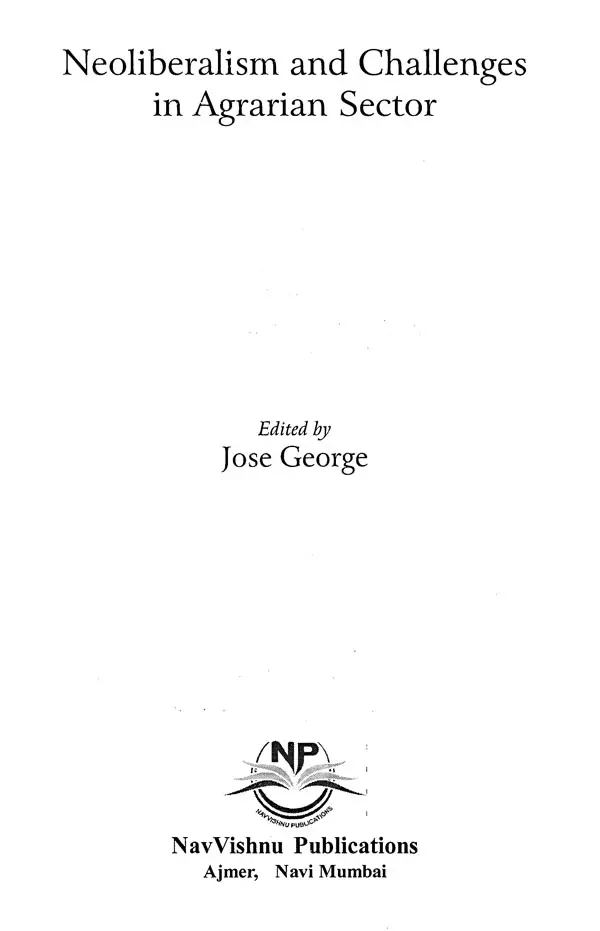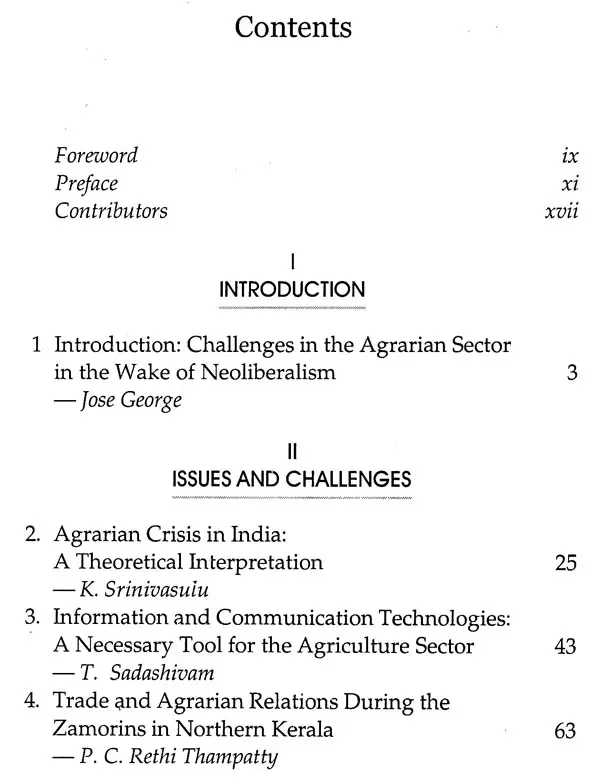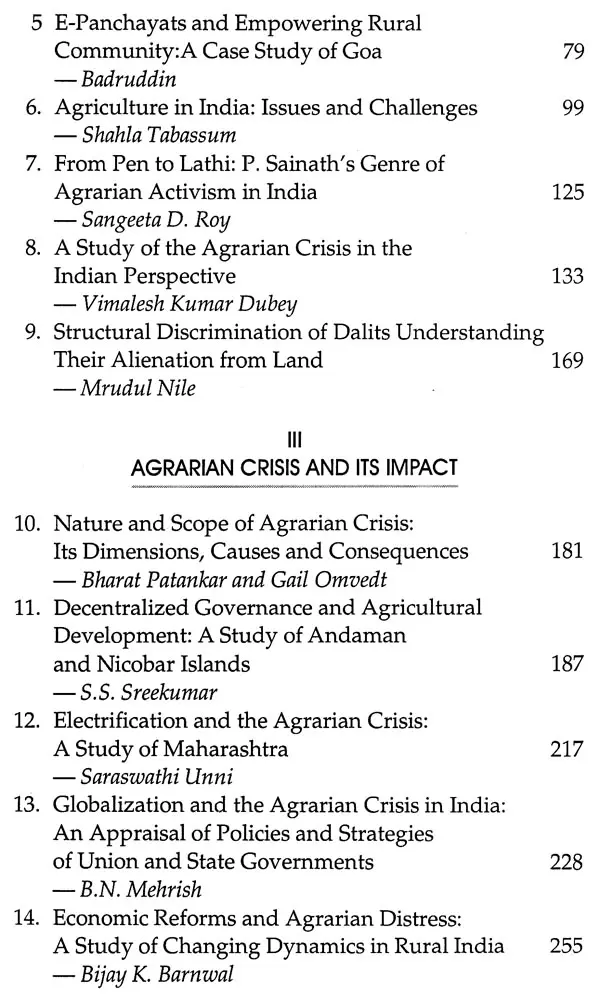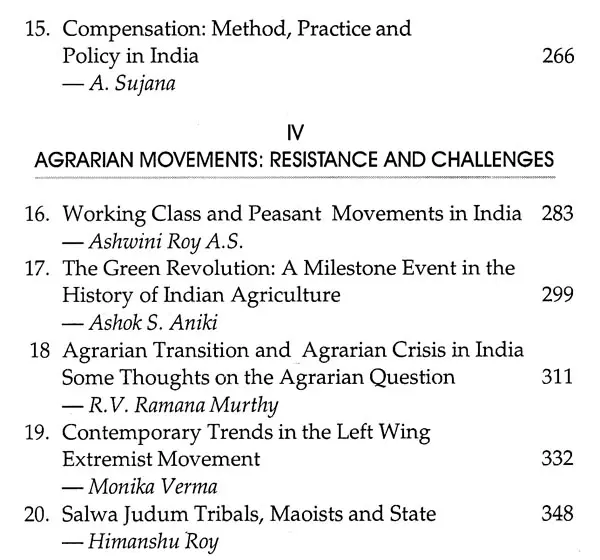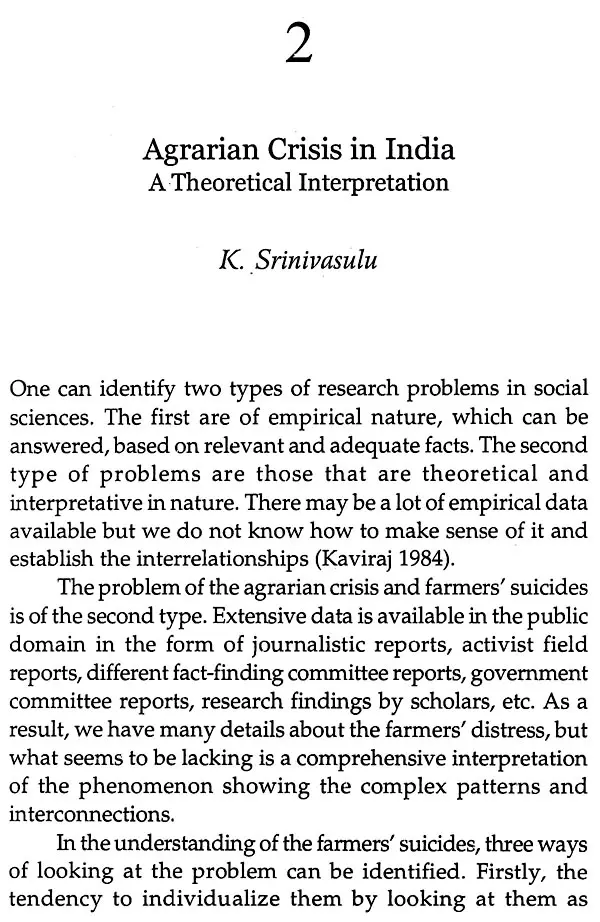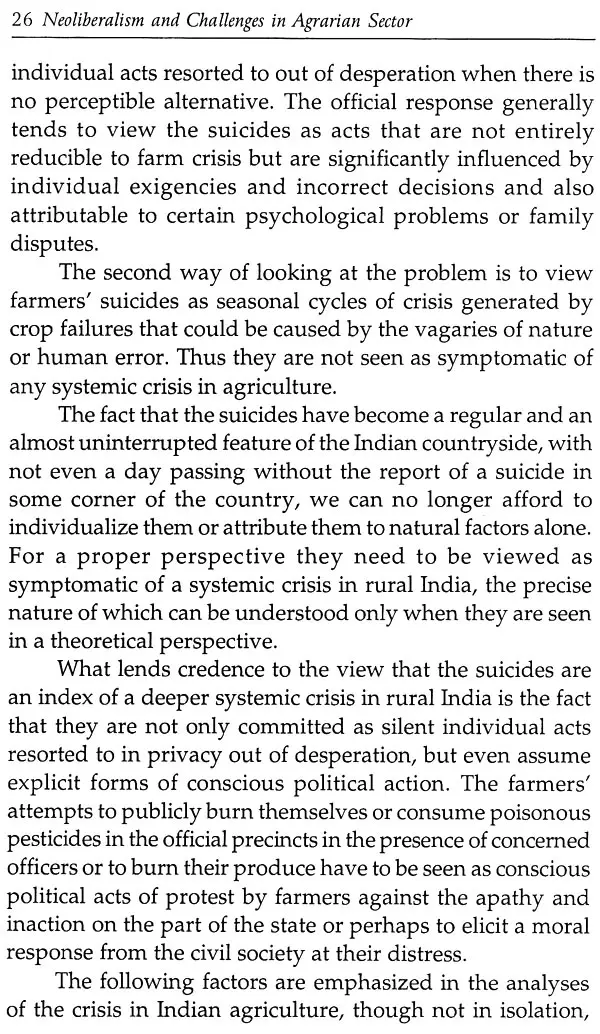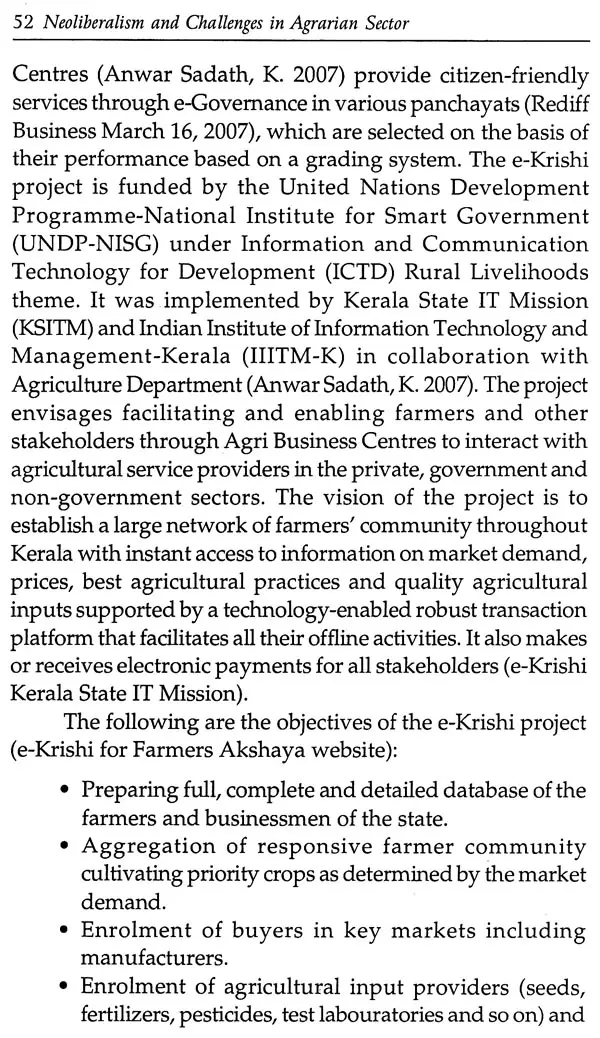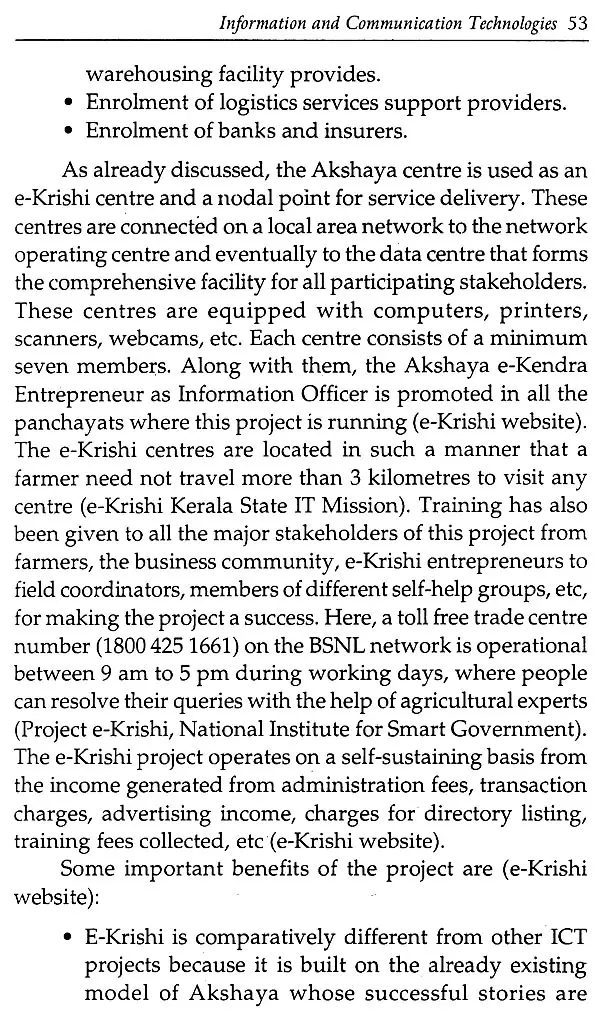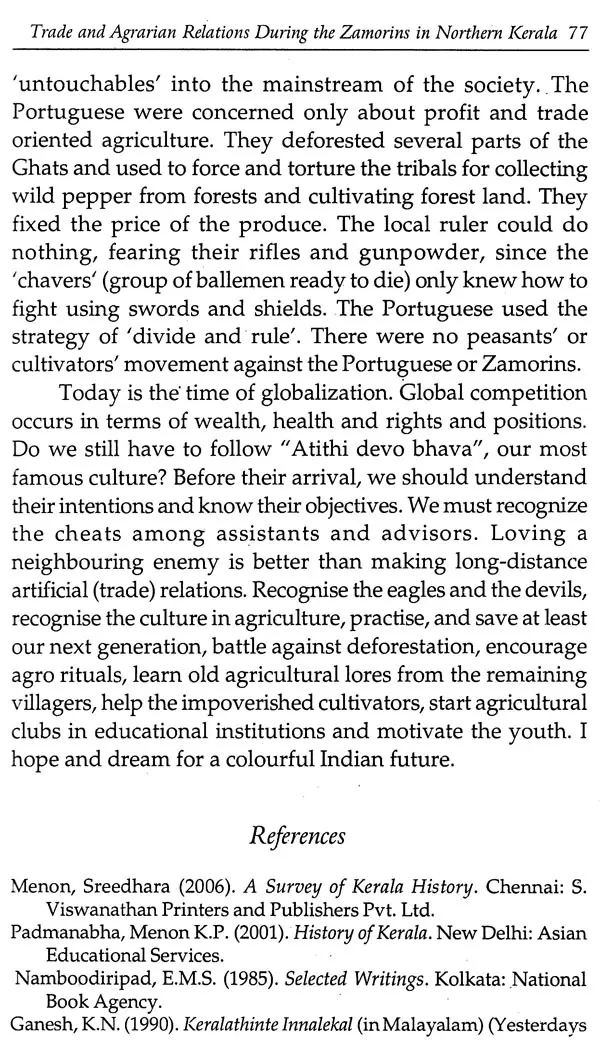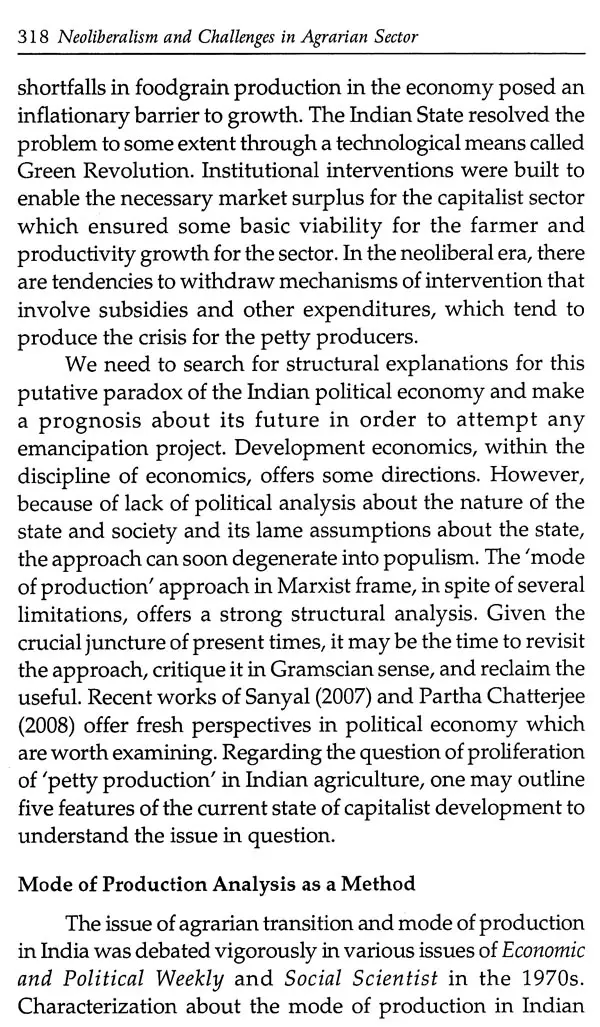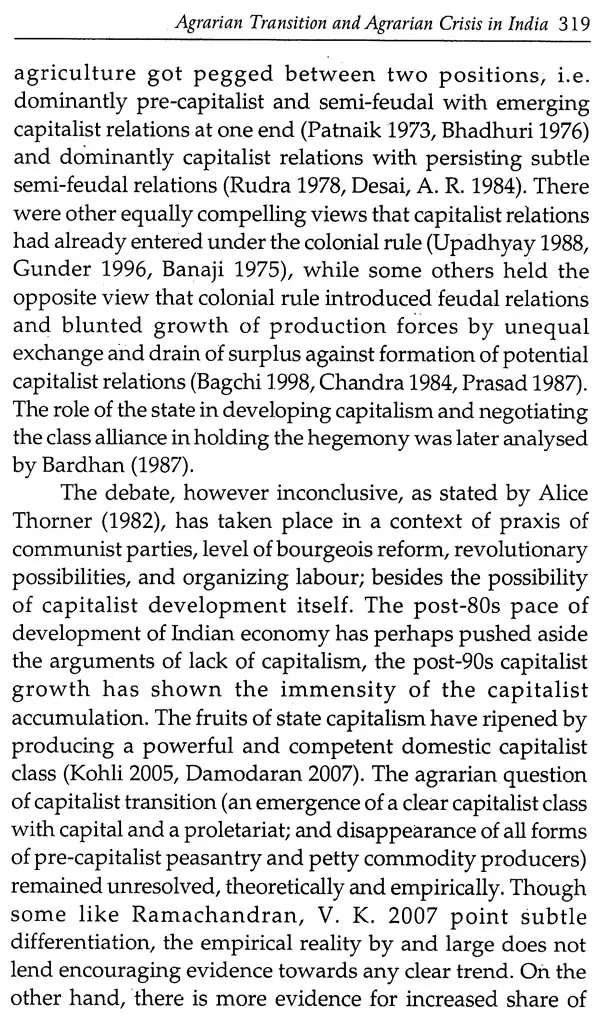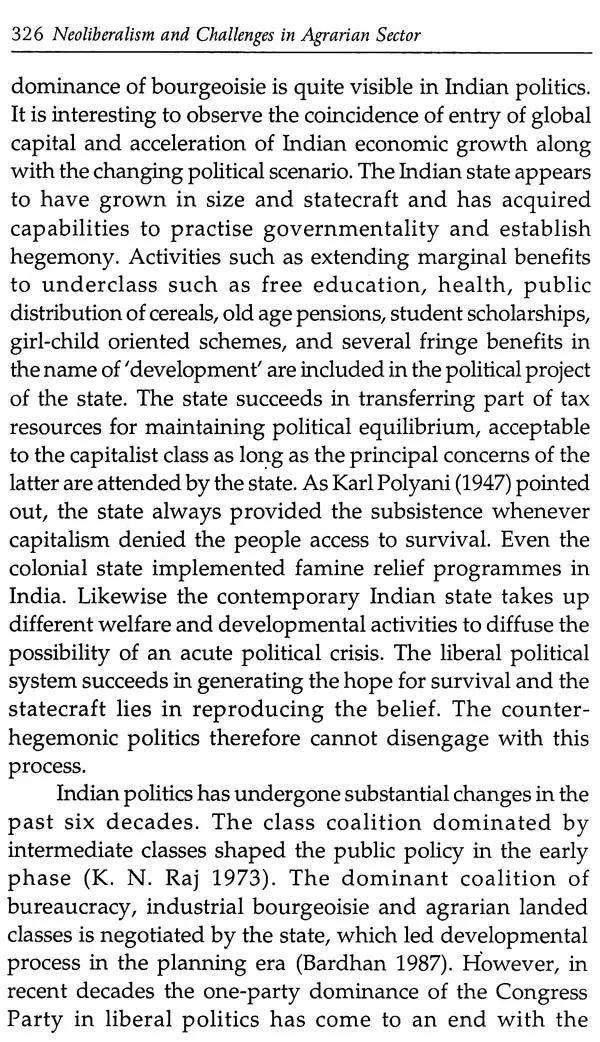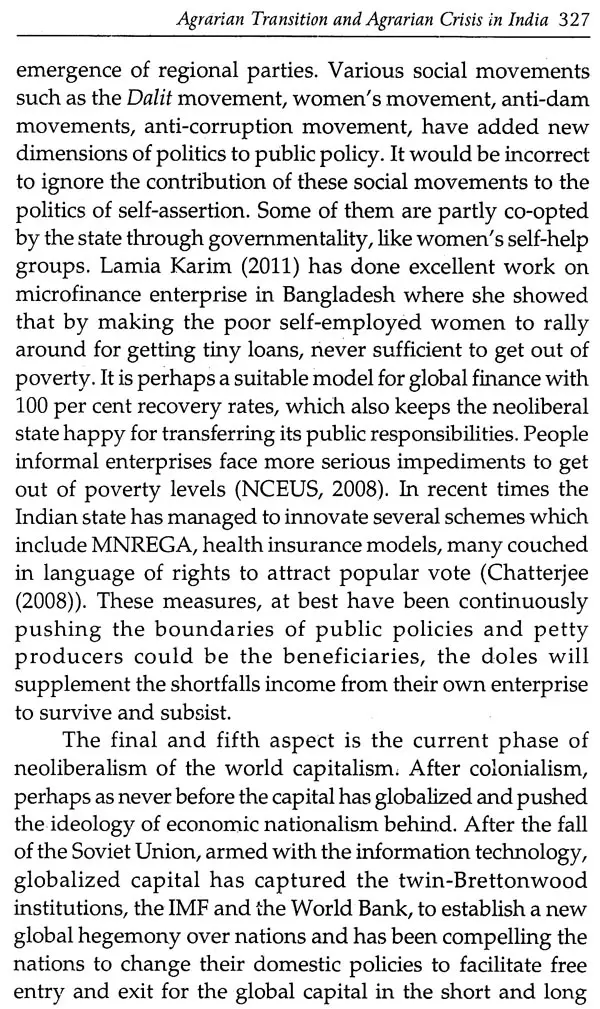
Neo-Liberalism and Challenges in Agrarian Sector
Book Specification
| Item Code: | UBD536 |
| Author: | Jose George |
| Publisher: | NavVishnu Publications, Mumbai |
| Language: | English |
| Edition: | 2020 |
| ISBN: | 9788194130741 |
| Pages: | 385 |
| Cover: | HARDCOVER |
| Other Details | 8.50 X 5.50 inch |
| Weight | 580 gm |
Book Description
I am honoured to write the Foreword for the book titled Neoliberalism and Challenges in the Agrarian Sector edited by Dr. Jose George, formerly Professor and Head of the Department of Civics and Politics, University of Mumbai.
The present volume contains a set of selected papers presented at the International Seminar on the theme 'Agrarian Relations, Peasant Movements and Rural Distress in Contemporary India' organized by the Department of Civics and Politics, University of Mumbai. One set of the selected papers presented at the International Seminar have already been published in the first book Agrarian Relations, Peasant Movements and Rural Distress in India in 2017.
The four parts of this volume provide a very extensive and useful compilation of a systematic and well-informed discourse on different issues focused on the challenges in the agrarian sector in the wake of neoliberalism. I agree with Dr. Jose George that this book is certainly a timely intervention and an academic resource to conceptualize, understand and find possible remedies to the agrarian crisis in the era of neoliberalism.
The expectation that the advent of capitalism in agriculture would neutralize some of the ill effects of feudal agrarian relations and would improve the condition of the peasantry in India appears to be an illusion. When we discuss or evoke the image of a village in modern India, a gloomy, distressed, poor, backward horrible picture comes to our immediate imagination. Even now, most of the rural population is engaged in farm-related activities. However, it is very difficult to earn a 'living with dignity' from the small and marginal farms upon which our rural households depend. That is why the share of agriculture in the Gross Domestic Product (GDP) scale is declining. Even now agriculture continues to engage around half the country's total workforce and over two-thirds of the rural workforce. No other sector of economy can absorb such a large number of people. However, over the years, the neoliberal state policies and the entry of market actors have forced the households to look for non-farm activities to supplement their income for survival. In an assessment in its annual report, the Ministry of Rural Development, Government of India, New Delhi, shockingly acknowledges that:
Supplementing this 'push' factor due to agrarian distress, opportunities stemming from urban growth and rise of the rural manufacturing sector proved to be a great 'pull' factor in diverting the rural economy towards non-farm activities. The unemployment rate in rural India has increased by two per cent. As on January 1, 2010, the number of unemployed was 9.8 million. By January 1, 2012, it has increased to 10.8 million.
**Contents and Sample Pages**
